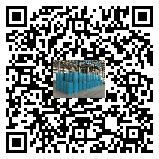Correct use guide for water-based wood paint leveling agent: full process analysis from preparation to construction
In the finishing process of water-based wood paint, leveling agent is an "invisible assistant" to improve the texture of the paint
film, but only by mastering the scientific method of use can it achieve the best effect. The following is a comprehensive analysis
of the correct use of water-based wood paint leveling agent from preparation before use, specific operation steps to precautions.
1. Core preparation before use: choose the right type + understand the substrate
Choose the right type of leveling agent according to the construction scene
Water-based wood paint leveling agent can be divided into surface tension reduction type (suitable for eliminating shrinkage
holes and pinholes), flow promotion type (suitable for improving brush marks and orange peel) and anti-shrinkage type
(suitable for curved surfaces or corners).
Furniture flat finishing: give priority to promoting flow type to ensure that the paint film is smooth and traceless;
Wooden floor or porous wood: match with anti-shrinkage type to avoid paint accumulation or shrinkage at the texture;
Spraying construction: choose low-foaming leveling agent to prevent bubbles from being generated during atomization
and affecting leveling.
Evaluate the characteristics of the substrate and paint
The wood surface needs to be treated in advance: ensure that there is no oil, dust and burrs. For porous wood, it is
recommended to apply a closed primer first to prevent excessive absorption of the leveling agent;
Understand the viscosity and solid content of water-based wood paint: high-viscosity paints may require an increase in the
amount of leveling agent, while low-solid content paints need to control the amount to prevent the paint film from being
too thin.
2. Key operating steps: proportion, addition, stirring and construction
Precisely control the addition ratio
The amount of water-based wood paint leveling agent added must strictly follow the product instructions, usually
0.1% - 1% of the total amount of paint (no more than 2% in special scenarios).
Example: Add 1 - 10g of leveling agent to 1000g of water-based wood paint;
Risk of overdosage: It may cause the paint film to soften, adhesion to decrease, or new defects such as "fish eyes" to appear.
Correct adding and stirring methods
Timing: It is recommended to add it during the water-based wood paint preparation stage to avoid temporary addition before
construction (which may cause uneven dispersion);
Stirring: Use an electric stirrer (speed 300-500 rpm) to stir at low speed for 3-5 minutes to ensure that the leveling agent and
the paint are completely integrated without particles or stratification.
Adjust details according to construction process
Brushing/rolling: After adding the leveling agent, the viscosity of the paint can be appropriately reduced (add 5%-10%
deionized water), the open time can be extended (to allow the paint to have enough time to level), and the number of back
and forth strokes can be reduced when brushing to prevent bubbles;
Spraying: Adjust the spray gun pressure (0.2-0.4MPa) and distance (20-30cm) to ensure uniform atomization of the paint,
and control the thickness of the spray at 30-50μm at a time to avoid excessive thickness causing sagging (the leveling agent
cannot completely eliminate severe sagging).
3. Precautions: Environment, Timeliness and Compatibility
Control the construction environment parameters
Temperature: 15 - 30℃ is the best. When it is lower than 10℃, the activity of the leveling agent decreases and the drying time
needs to be extended. When it is higher than 35℃, the paint dries too quickly and the leveling is not sufficient;
Humidity: 50% - 70% is appropriate. High humidity (>85%) can easily cause the paint film to turn white, affecting the leveling
effect;
Ventilation: Maintain moderate ventilation (avoid strong wind blowing directly) to help evaporate water but not interfere with
the natural leveling of the paint.
Pay attention to the applicable timeliness of the paint
Water-based wood paint with leveling agent added should be used up within 4 - 6 hours (see the product instructions for details).
After the time limit, the performance may change due to the evaporation of water, affecting the leveling effect.
Test compatibility in advance
Different brands of water-based wood paint may have different compatibility with leveling agents. A small test is required before
the first use: take a small amount of paint and add the leveling agent. After stirring, observe whether there is precipitation,
stratification or thickening. If there is no abnormality, it can be used on a large scale.
4. Common problems and solutions
There are still brush marks after leveling: it may be due to insufficient addition or uneven stirring. You can add 0.2% leveling
agent and stir again;
Pitting of paint film: mostly due to poor dispersion of leveling agent, it is necessary to increase the stirring speed or replace
the leveling agent with better compatibility;
Edge droop: reduce the thickness of a single coating, or choose an anti-droop leveling agent for use.
The correct use of water-based wood paint leveling agent is essentially to balance the rhythm of "flow" and "drying" - allowing
the paint to spread fully before curing, and to stabilize the shape before drooping. By accurately controlling the proportion
and coordinating the process details, the paint film of wood products can achieve "mirror-level" smoothness, which not only
retains the natural texture of the wood, but also shows the decorative charm of the paint.


